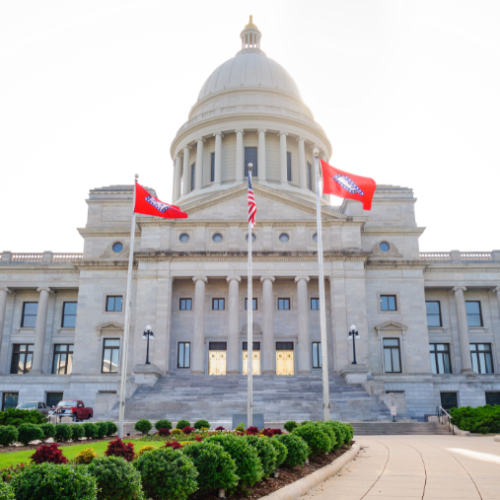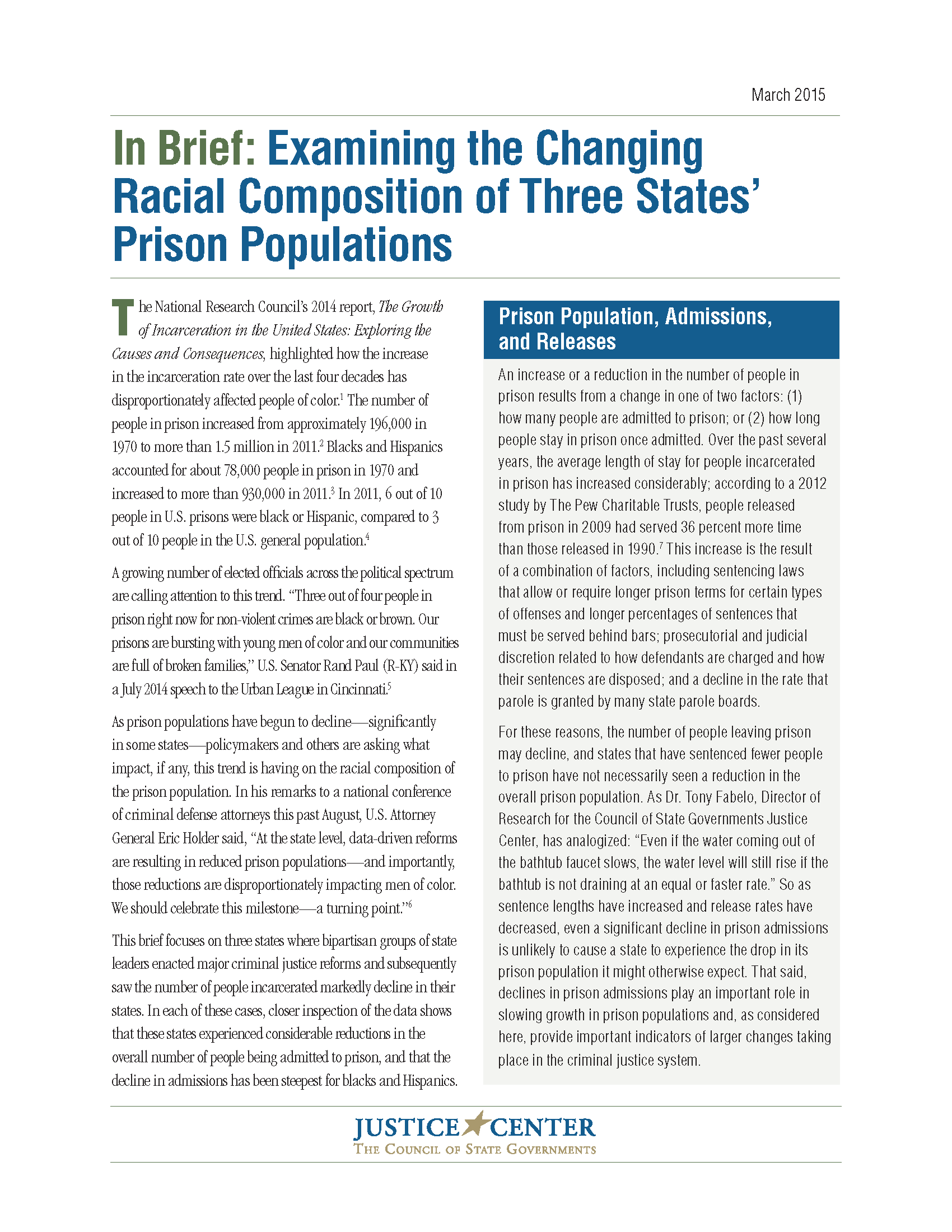Examining the Changing Racial Composition of Three States’ Prison Populations
This brief focuses on three states—Georgia, Connecticut and North Carolina—where bipartisan groups of state leaders enacted major criminal justice reforms and subsequently saw the number of people incarcerated markedly decline in their states.
A review of the composition of prison populations in three states found that drops in prison admissions, prison populations, or both, in recent years have been especially pronounced among nonwhites according to a brief released on March 26, 2015, by the Council of State Governments (CSG) Justice Center.
This brief focuses on three states—Georgia, Connecticut and North Carolina—where bipartisan groups of state leaders enacted major criminal justice reforms and subsequently saw the number of people incarcerated markedly decline in their states. A closer look showed that these three states experienced significant reductions in the number of people admitted to prison, with the steepest declines among blacks and Hispanics.
Among the brief’s highlights:
- Georgia: Since 2012, prison admissions have dropped by 8 percent. While admissions for whites remained unchanged, admissions among blacks dropped by 11 percent.
- Connecticut: The total number of people in Connecticut prisons declined by almost 17 percent between 2008 and 2015. Meanwhile, the drop in the number of blacks and Hispanics during the same period—21 percent and 23 percent, respectively—was three times as steep as the decline in the number of whites.
- North Carolina: Total admissions to prison in the state dropped by 21 percent between 2011 and 2014, and the declines were even larger for blacks and Hispanics, with drops of 26 percent and 37 percent, respectively. Declines for these groups in the prison population were also substantial, with blacks and Hispanics dropping by 12 percent and 16 percent, respectively, while whites fell a little more than 1 percent.
Although these trends coincide with reforms enacted in each of the three states, the brief is careful to qualify that any finding of a causal relationship between the reforms and the changes in the states’ prison populations is premature. Determining to what extent, if any, the reforms are driving these trends requires additional research. The brief also notes that state policymakers designed their respective reforms in these three states to increase public safety and to reduce spending on corrections.
The developments highlighted in this brief, however, do offer evidence of significant progress in reversing a trend that has generated widespread attention and concern throughout the country. According to a report from the National Academy of Sciences released last year, six out of 10 people in U.S. prisons in 2011 were black or Hispanic, up from four out of 10 people in 1970. Meanwhile, only 3 out of 10 people in the general population in the U.S. in 2011 were black or Hispanic.
While this brief does not present new research, it does underscore the need for additional research that addresses some key questions:
- Have these (and other) states’ policy reforms contributed to the decline in admissions of black and Hispanic adults?
- To what extent have certain changes to sentencing policy, responses to violations of conditions of release, and investments in community-based treatment especially benefitted nonwhite adults?
- How do states everywhere monitor these trends, and the reasons behind them, more closely?
Arkansas policymakers have long expressed concerns about the state’s high recidivism rate. Over the past 10 years, an…
Read MoreIn April 2025, Arkansas Governor Sarah Huckabee Sanders signed a package of bipartisan criminal justice legislation into law,…
Read More Explainer: Key Findings and Options from Arkansas’s Justice Reinvestment Initiative
Explainer: Key Findings and Options from Arkansas’s Justice Reinvestment Initiative
Arkansas policymakers have long expressed concerns about the state’s high recidivism rate. Over the past 10 years, an estimated 72 percent of prison admissions in the state involved people who were revoked from supervision, with unmet substance use and mental health challenges playing a significant role in these failures.
Read More Explainer: How a New Law in Arkansas Tackles Crime, Recidivism, and Community Supervision Challenges
Explainer: How a New Law in Arkansas Tackles Crime, Recidivism, and Community Supervision Challenges
In April 2025, Arkansas Governor Sarah Huckabee Sanders signed a package of bipartisan criminal justice legislation into law, which is designed to increase public safety and improve community supervision. The legislation passed nearly unanimously.
Read More










